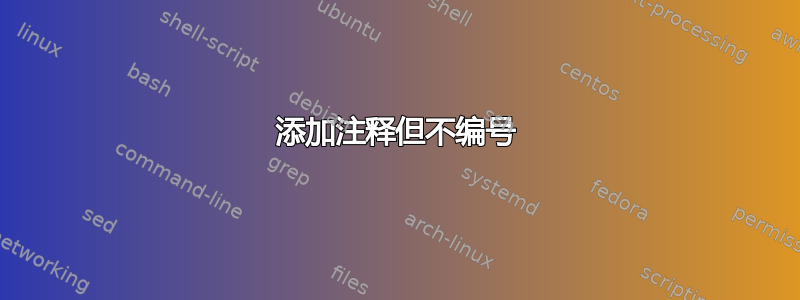
\documentclass[11pt, a4paper]{article}
% \usepackage{eurosym}% you probably don't need this (most fonts have euro)
%%%%%%%%%%%%%%%%%%%%%%%%%%%%%%%%%%%%%%%%%%%%%%%%%%%%%%%%%%%%%%%%%%%%%%%%%%%%%%%%%%%%%%%%%%%%%%%%%%%%%%%%%%%%%%%%%%%%%%%%%%%%%%%%%%%%%%%%%%%%%%%%%%%%%%%%%%%%%%%%%%%%%%%%%%%%%%%%%%%%%%%%%%%%%%%%%%%%%%%%%%%%%%%%%%%%%%%%%%%%%%%%%%%%%%
%% \usepackage{amsmath} % you load this below
%%\usepackage{amsfonts} % you load this below
\usepackage{bm}
\usepackage{amsfonts, graphicx, verbatim, amsmath,amssymb}
\usepackage{color}
% \usepackage{lipsum} % only for demos
\usepackage{array}
\usepackage{setspace}% if you must (for double spacing thesis)
\usepackage{fancyhdr}
%\setcounter{MaxMatrixCols}{10} 10 is teh default anyway
%TCIDATA{OutputFilter=Latex.dll}
%TCIDATA{Version=5.50.0.2953}
%TCIDATA{<META NAME="SaveForMode" CONTENT="1">}
%TCIDATA{BibliographyScheme=Manual}
%TCIDATA{LastRevised=Sunday, November 26, 2017 16:01:29}
%TCIDATA{<META NAME="GraphicsSave" CONTENT="32">}
% These are sort of OK, but better to use geometry package
% to set a consistent set of page dimensions
\setlength{\textheight}{22cm}\setlength{\textwidth}{16cm}
\setlength{\topmargin}{-1.5cm}
\setlength{\oddsidemargin}{-0.5cm}\setlength{\evensidemargin}{-0.5cm}
\setlength{\textheight}{24cm}\setlength{\textwidth}{16.5cm}
\setlength{\topmargin}{-1.5cm}
\setlength{\oddsidemargin}{0.5cm}\setlength{\evensidemargin}{0.5cm}
% This discards its argument, is that intended?
% \U{wibble} is same as \U{zzzzz}
\providecommand{\U}[1]{\protect\rule{.1in}{.1in}}
\newtheorem{theorem}{Theorem}[section]
\newtheorem{acknowledgement}[theorem]{Acknowledgement}
\newtheorem{algorithm}[theorem]{Algorithm}
\newtheorem{axiom}[theorem]{Axiom}
\newtheorem{case}[theorem]{Case}
\newtheorem{claim}[theorem]{Claim}
\newtheorem{Theorem}[theorem]{Theorem}
\newtheorem{conclusion}[theorem]{Conclusion}
\newtheorem{condition}[theorem]{Condition}
\newtheorem{conjecture}[theorem]{Conjecture}
\newtheorem{Fact}[theorem]{Fact}
% Why all these variant corollary forms?
\newtheorem{corollary}[theorem]{Corollary}
%\newtheorem{corol}[theorem]{Corollary}
%\newtheorem{Corollary}[theorem]{Corollary}
\newtheorem{criterion}[theorem]{Criterion}
% why variant definition forms?
\newtheorem{definition}[theorem]{Definition}
%\newtheorem{Definition}[theorem]{Definition}
\newtheorem{example}[theorem]{Example}
\newtheorem{exercise}[theorem]{Exercise}
% as above
\newtheorem{lemma}[theorem]{Lemma}
%\newtheorem{Lemma}[theorem]{Lemma}
\newtheorem{fact}[theorem]{Fact}
\newtheorem{lma}[theorem]{Lemma}
\newtheorem{notation}[theorem]{Notation}
\newtheorem{problem}[theorem]{Problem}
% as above
\newtheorem{proposition}[theorem]{Proposition}
%\newtheorem{prop}[theorem]{Proposition}
%as above
\newtheorem{Property}[theorem]{Property}
%\newtheorem{property}[theorem]{Property}
\newtheorem{remark}[theorem]{Remark}
\newtheorem{Comment}[theorem]{Comment}
\newtheorem{solution}[theorem]{Solution}
\newtheorem{summary}[theorem]{Summary}
% it would be better to use amsthm package for the theorem definitions
% That defines a more extensive proof environment
\newenvironment{proof}[1][Proof]{\textbf{#1.} }{\ \rule{0.5em}{0.5em}}
\newcommand{\ve}{\varepsilon}
%Better to use \mathrm than \text so it uses the same font in all contexts
\newcommand{\cvgpr}{\xrightarrow{\text{\upshape\tiny P}}}
\newcommand{\cvgdist}{\xrightarrow{\mathrm{d}}}
\newcommand{\G}{{\mathcal{G}}}
% \mathcal{K} not {\cal K} %\cal not defined by default since 1993
%\newcommand{\Kx}{{\cal K}}
%\newcommand{\tod}{\to^{\cal D}}
\newcommand{\ls}{\limsup_{n\to\infty}}
\newcommand{\rE}{\mathbb{E}}
\newcommand{\A}{{\mathcal{A}}}
\newcommand{\rP}{\mathbb{P}}
\newcommand{\p}{{\mathbb{P}}}
\newcommand{\Z}{{\mathbb{Z}}}
% \mathrm{Be} not {\rm BeK} %\cal not defined by default since 1993
%\newcommand{\Be}{{\rm Be}}
\newcommand{\re}{\mathrm{e}}
\newcommand{\ep}{\varepsilon}
%\newcommand{\Bin}{{\rm Bin}}
\newcommand{\qand}{\quad\mbox{and}\quad}
\newcommand{\quso}{\quad\mbox{so}\quad}
%\newcommand{\Nn}{{\bf N}}
%\newcommand{\St}{\underline{\rm S}}
%\newcommand{\Rt}{\underline{\rm R}}
%\newcommand{\It}{\underline{\rm I}}
%\newcommand{\one}{{\bf 1}}
\newcommand{\Ups}{{\Upsilon}}
\newcommand{\iu}{{i\mkern1mu}}
\newcommand{\II}{{\mathcal{I}}}
%\newcommand{\Var}{{\rm Var}}
%\newcommand{\var}{{\rm Var}}
%\newcommand{\Cov}{{\rm cov}}
%\newcommand{\cov}{{\rm cov}}
%\newcommand{\corr}{{\rm corr}}
%\newcommand{\lhs}{{\rm lhs}}
%\newcommand{\rhs}{{\rm rhs}}
\newcommand{\ra}{\rightarrow}
\newcommand{\I}{{\mathbf 1}}
\newcommand{\R}{{\mathbb R}}
\newcommand{\N}{{\mathbb N}}
\newcommand{\LL}{{\mathbb L}}
\newcommand{\E}{{\mathbb{E}}}
%\newcommand{\bin}{{\rm Bin}}
%\newcommand{\Pois}{{\rm Pois}}
%\newcommand{\Po}{{\rm Pois}}
%\newcommand{\Bi}{{\cal B}}
\newcommand{\ri}{\mathrm{i}}
\newcommand{\rd}{\mathrm{d}}
\newcommand{\XXi}{\Xi_{k,m}^{(n)}}
\newcommand{\xxi}{\bar{\xi}}
\newcommand{\qedhere}{{\diamond}}
\newcommand{\eqdef}{\stackrel{\mathrm{def}}{=}}
\newcommand{\eqdist}{\stackrel{\mathrm{D}}{=}}
\newcommand{\braket}[2]{{\langle{#1|#2}\rangle}}
\newcommand{\independent}{\perp}
% use amsmath package (that you have loaded) align environment, not eqnarray
%\newcommand{\bb}{\begin{eqnarray*}}
%\newcommand{\ee}{\end{eqnarray*}}
%\newcommand{\bbb}{\begin{eqnarray}}
%\newcommand{\eee}{\end{eqnarray}}
\newcommand{\F}{{\mathcal{F}}}
\newcommand{\qed}{$\diamond$}
% \parindent 0pt % this is just low level version of following line
% \setlength{\parindent}{0pt}%
% use parskip package (if you must) to stop indent and put vertical space betwen paragraphs
% although most documents lok better with traditional typesetting with indentation and no vertical space
\usepackage{parskip}
%\newcommand{\forceindent}{\leavevmode{\parindent=3em\indent}}%eek
\usepackage{enumitem}
%\input{tcilatex}
\begin{document}
For simplicity let
\[
\beta = (123), \quad \gamma = (12)
\]
I will leave it to the reader to check that the other elements of the group $S_3$ are indeed generated by $\beta$ and $\gamma$ by the following:
\[
\beta^3 = e, \quad \beta^2 = (132), \quad \beta\gamma = (13), \quad \text{and } \beta^2\gamma = (23)
\]
\begin*{\textit{Remark}}:
$\beta\gamma$ is in composition of functions notation - i.e. you do $\gamma$ first then $\beta$
\end*{}
\end{document}
我希望添加不带编号的注释,但每当我尝试时,它总是被编号。
编辑:我已经编辑了代码,这就是我所做的,这是最好的方法还是有更好的方法?
答案1
我喜欢这个ntheorem包。试试
\documentclass[12pt]{article}
\usepackage[a4paper]{geometry}
\usepackage[centertags,reqno]{amsmath}
\usepackage{mathtools}
\usepackage[thmmarks,amsmath]{ntheorem}
\theoremnumbering{arabic}
\theoremstyle{break}
\theoremsymbol{}
\theoremheaderfont{\normalfont\bfseries}
\theorembodyfont{\upshape}
\newtheorem{remark}{Remark}
\theoremstyle{nonumberbreak}
\newtheorem{remarknn}{Remark}
\begin{document}
\begin{remarknn}
My remark without numbering.
\end{remarknn}
\begin{remark}
My numbered remark.
\end{remark}
\end{document}



